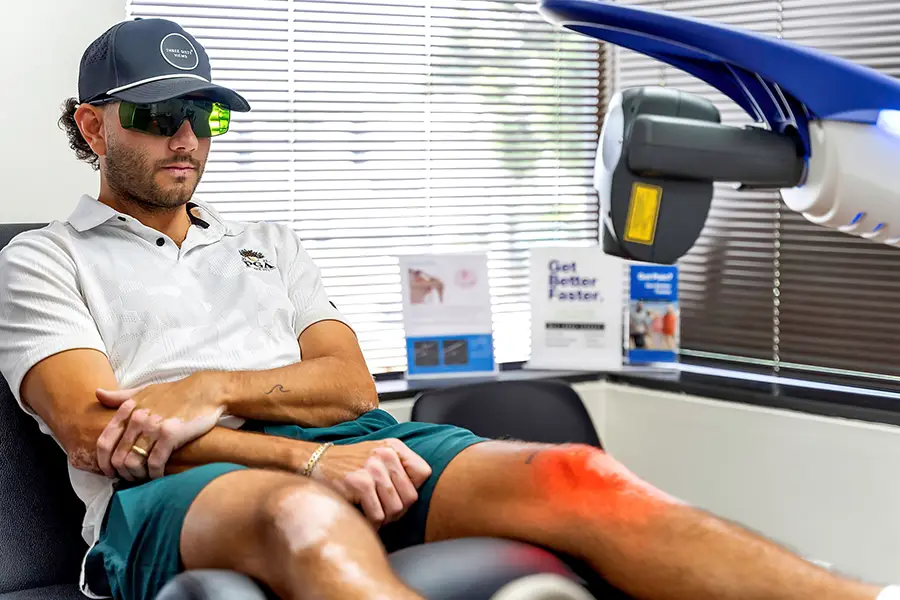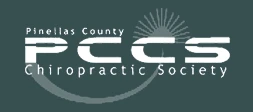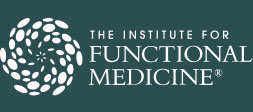Knee Pain
Knee Pain: Causes, Locations, Relief, and Treatment Options in St. Petersburg, Florida
Living with knee pain can make daily activities—like walking, climbing stairs, or even getting out of bed—feel overwhelming. If you’re in St. Petersburg, Florida, and struggling with knee pain, you’re not alone. Many people in neighborhoods like Old Northeast, Crescent Heights, Euclid, Kenwood, and Shore Acres face similar challenges. The information below will help you understand what causes knee pain, where it might hurt, the best ways to relieve it, and what treatment options are available locally.
What causes knee pain?
Knee pain can develop for many reasons. Some causes are temporary and easy to treat, while others may need more attention from a doctor. The most common reasons include:
- Arthritis: Osteoarthritis happens when the cartilage wears away, while rheumatoid arthritis causes joint inflammation and is an autoimmune disease.
- Tendinitis: This is when tendons around the knee become inflamed from overuse or repeated motion, common in athletes and people with repetitive jobs.
- Knee injuries: Sudden injuries like ligament tears (ACL, MCL), meniscus tears, or fractures can cause swelling, pain, and instability.
- Overuse and strain: Activities that put repeated stress on the knee—like running or squatting—can lead to pain over time.
- Obesity: Carrying extra weight increases pressure on your knees, which can make pain worse and speed up cartilage breakdown.
- Bursitis: Sometimes, the small fluid-filled sacs (called bursae) in the knee can get swollen and hurt, which is called bursitis.
- Gout or pseudogout: These are types of arthritis caused by crystal buildup in the joint, leading to sudden, severe pain and swelling.
In St. Petersburg, active lifestyles, sports, and the city’s warm climate can sometimes contribute to overuse injuries, especially in popular areas like Crescent Lake Park or the Pinellas Trail.
Knee Pain Location Chart
| Location of Pain | Possible Causes |
|---|---|
| Front of the knee | Patellofemoral pain syndrome, patellar tendonitis, quadriceps tendonitis, bursitis |
| Behind the knee | Baker’s cyst, hamstring tendonitis, PCL injury, meniscus tear |
| Inner (medial) knee | Osteoarthritis, meniscus injury, MCL injury, overuse |
| Outer (lateral) knee | IT band syndrome, lateral meniscus tear, ligament injuries |
| Pain when bending | Torn ligament or meniscus, patellar tendonitis, bursitis, arthritis |
| Bilateral (both knees) | Osteoarthritis, rheumatoid arthritis, obesity, systemic conditions |
Pain Behind the Knee
Pain in the back of the knee is often caused by a Baker’s cyst (a fluid-filled swelling), a posterior cruciate ligament (PCL) injury, or hamstring tendonitis. Sometimes, osteoarthritis can also cause discomfort in this area, especially in older adults.
Inner Knee Pain (Medial Knee Pain)
Pain on the inside of the knee is called medial knee pain. It can be due to osteoarthritis, a meniscus tear, or an MCL (medial collateral ligament) injury. Adults over 60 are more likely to have inner knee pain from arthritis, while younger people might get it from sports or overuse.
Knee Pain When Bending
If your knee hurts when you bend it, possible causes include patellofemoral syndrome (pain in front of the knee), tendonitis, or a meniscus tear. Pain behind the knee when bending may be from a Baker’s cyst or hamstring tendonitis. Sharp pain when bending could mean a ligament or meniscus tear.
Lateral Knee Pain (Pain on Outside of Knee)
Pain on the outer side of the knee is often due to iliotibial (IT) band syndrome, a lateral meniscus tear, or a ligament injury. Runners and cyclists often experience this type of pain.
Bilateral Knee Pain
Pain in both knees at the same time is usually linked to conditions like osteoarthritis, rheumatoid arthritis, or being overweight. Sometimes, overuse or certain medications can also cause pain in both knees.
What Is the Best Painkiller for Knee Pain?
The best painkiller depends on your health and the cause of your knee pain. Here’s what you need to know:
- NSAIDs (Nonsteroidal Anti-Inflammatory Drugs): Ibuprofen (Advil, Motrin), naproxen (Aleve), and aspirin are effective for pain and swelling. These are often the first choice for knee pain that involves inflammation.
- Acetaminophen (Tylenol): This over-the-counter painkiller usually works best for mild to moderate pain, especially if you can’t take NSAIDs due to stomach, kidney, or heart problems.
- Topical Medications: Creams or gels like diclofenac (Voltaren) can be rubbed onto the knee for localized relief, with fewer side effects than pills.
- Corticosteroid Injections: For severe pain or swelling, doctors may inject steroids directly into the knee. Relief can last for months, but you shouldn’t get these shots too often.
- Hyaluronic Acid Injections: These can help lubricate the knee joint and reduce pain, especially in osteoarthritis.
It’s always best to talk to your doctor or pharmacist before taking any new medication, especially if you have other health conditions or take other medicines.

What Is the Fastest Way to Relieve Knee Pain?
If you need quick relief, try these steps:
- Rest: Stop activities that make the pain worse and give your knee a break.
- Ice: Apply an ice pack for 10-15 minutes every couple of hours to reduce swelling and numb the area.
- Compression: Try using an elastic bandage or knee sleeve to support the knee and limit swelling.
- Elevation: Keep your knee raised above your heart to help reduce swelling.
- Over-the-Counter Painkillers: NSAIDs or acetaminophen can help with pain and swelling.
- Gentle Movement: Once the pain starts to improve, gentle stretching and strengthening exercises can help you recover faster.
For people in St. Petersburg, local clinics like St Petersburg Spine and Joint Clinic offer advanced therapies for faster, non-invasive relief.
Knee Pain Treatment
There are lots of ways to treat knee pain, from simple home remedies to advanced medical procedures. Which treatment is right for you will depend on the cause and severity of your pain, and your doctor’s instructions.
KT Tape for Knee Pain
KT tape (Kinesiology Therapeutic tape) is a stretchy, adhesive tape that supports the knee, reduces pressure, and improves blood flow. It can help with swelling, stability, and pain from injuries or arthritis. To use it, bend your knee to 90 degrees, anchor the tape above the kneecap, and apply strips down the sides of the knee. Always follow instructions or ask a healthcare professional for help.
Knee Brace for Pain
Using a knee brace can provide reduced pain by providing support, especially during activities that usually cause discomfort. Braces are helpful for osteoarthritis, ligament injuries, or after surgery. Not everyone needs a brace, but if it helps you move with less pain, it’s a good option. Talk to your doctor about which type is best for you.
Stretches for Knee Pain
Stretching helps keep your knee flexible and reduces pain. Good stretches include:
- Hamstring Stretch: Lie on your back, lift your leg, and gently pull it toward you to stretch the back of your thigh.
- Quadriceps Stretch: Stand, bend your knee, and pull your heel toward your buttock to stretch the front of your thigh.
- Calf Stretch: Stand facing a wall, step one foot back, and press your heel into the floor.
Hold each stretch for 10–20 seconds and repeat a few times. Don’t stretch into pain—stop if it hurts.
Exercises for Knee Pain
Strengthening the muscles around your knee can reduce pain and prevent future injuries. Try these exercises:
- Straight-Leg Lifts: Lie on your back, keep one leg straight, and slowly lift it up and down.
- Hamstring Curls: Stand and bend your knee to bring your heel toward your buttock, then lower.
- Calf Raises: Stand and slowly rise up on your toes, then lower down.
Do these exercises slowly and stop if you feel pain. Local physical therapists in St. Petersburg can create a personalized program for you.
Traditional Treatments for Knee Pain
- Physical Therapy: A physical therapist can teach you exercises and stretches to strengthen your knee and improve movement.
- Medications: NSAIDs, acetaminophen, and topical creams help with pain and swelling.
- Injections: Corticosteroids or hyaluronic acid can be injected into the knee for longer-lasting relief.
- Lifestyle Changes: Losing weight, using proper footwear, and avoiding high-impact activities can make a big difference.
Surgical Options for Knee Pain
Surgery is usually the last resort if other treatments don’t work. Common types include:
- Arthroscopy: A minimally invasive surgery to repair or clean out damaged tissue.
- Partial or Total Knee Replacement: Replaces worn-out or damaged parts of the knee with artificial joints.
- Ligament or Meniscus Repair: Fixes torn ligaments or cartilage.
Knee pain surgeons in St. Petersburg use advanced techniques and imaging to improve outcomes and speed up recovery.

Living with Knee Pain in St. Petersburg, Florida
Knee pain can affect anyone, from young athletes in Snell Isle to retirees in Isla Del Sol. Local clinics and doctors are ready to help with personalized care, advanced treatments, and supportive therapies. If you’re struggling with knee pain, don’t wait—early treatment can prevent further damage and help you stay active.
When to See a Knee Pain Doctor
If your knee pain is severe, lasts more than a few days, or comes with swelling, redness, or trouble moving your knee, see a doctor right away. Local specialists in St. Petersburg can diagnose the problem and recommend the best treatment for you.
You don’t have to live with knee pain. Help is available right here in St. Petersburg, whether you live near the waterfront, downtown, or in the suburbs.
Advanced Alternative Approaches to Knee Pain Treatment in St. Petersburg, Florida
St. Petersburg Spine and Joint Center provides options to help patients avoid surgery or reduce their dependence on medication. We offer two promising alternative treatments that have shown remarkable results: Shockwave Therapy (ESWT) and MLS Robotic Laser Therapy.

Shockwave Therapy (ESWT) for Knee Pain
Shockwave therapy, or extracorporeal shockwave therapy (ESWT), is a non-invasive medical treatment that employs high-energy sound waves to encourage healing and alleviate pain in different musculoskeletal illnesses. Throughout the treatment, a specialized equipment administers regulated shockwaves to the affected region of the body. These shockwaves traverse through the skin and underlying tissues, creating a mechanical force that boosts tissue regeneration, enhances blood circulation, and reduces inflammation.

MLS Robotic Laser Therapy
MLS Robotic Laser Therapy is a non-invasive treatment that utilizes low-level laser energy to stimulate tissue repair and reduce inflammation. By targeting the affected area of the spine, this therapy reduces pain and promotes healing. Unlike surgical procedures, cold laser therapy requires no incisions, anesthesia, or downtime.
How to Get Started on the Road to Recovery
Consultation with Our Expert Team: Schedule a consultation with our experienced healthcare professionals to determine if you qualify as a candidate for these treatments. We will review your symptoms, medical history, and diagnostic imaging to provide personalized recommendations. Not all individuals with knee pain are candidates for our treatments, so it is important to schedule a consultation with our team to assess your unique situation.








